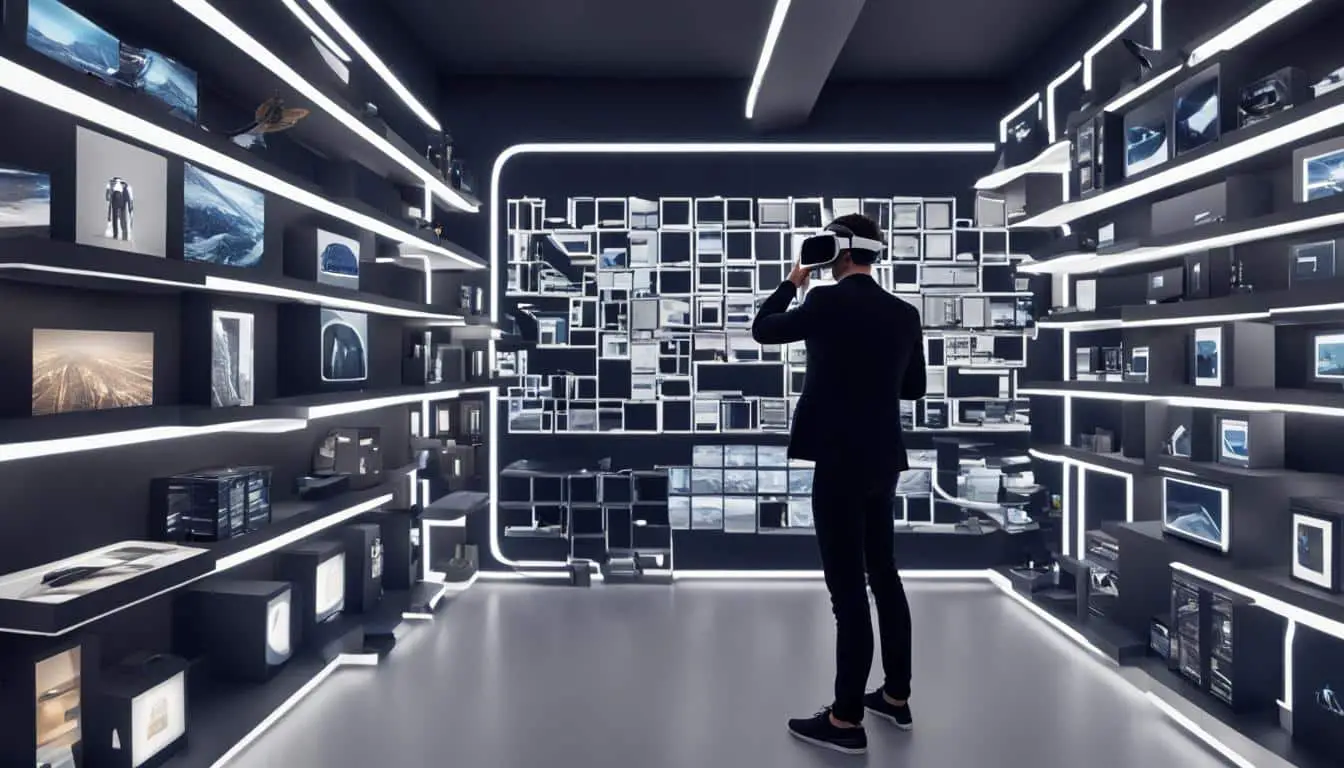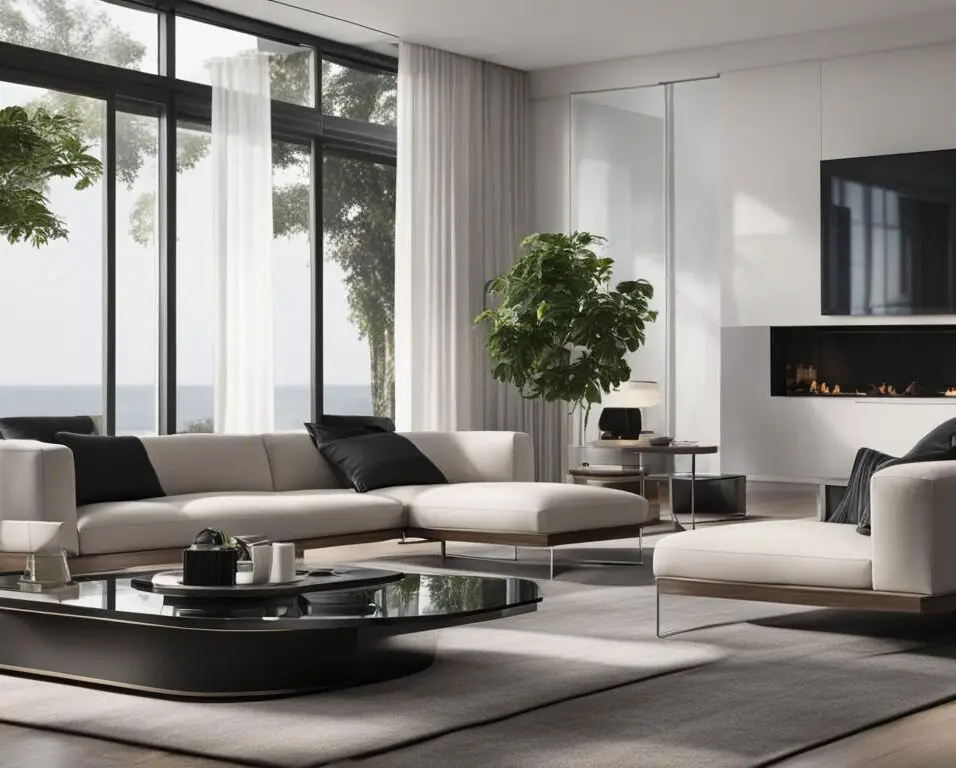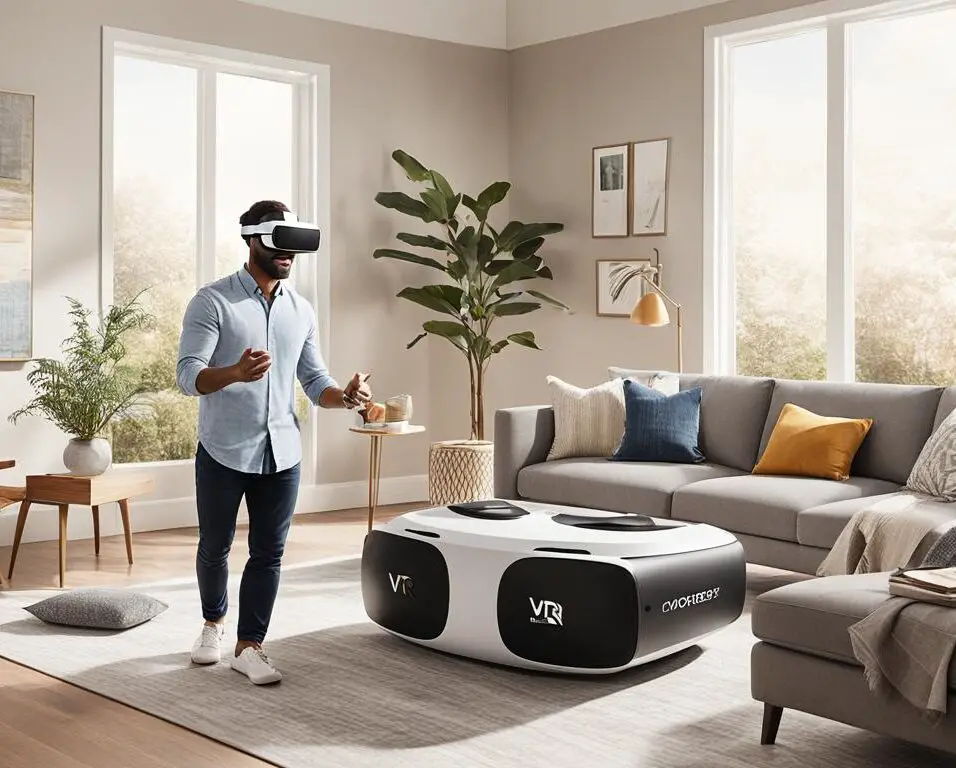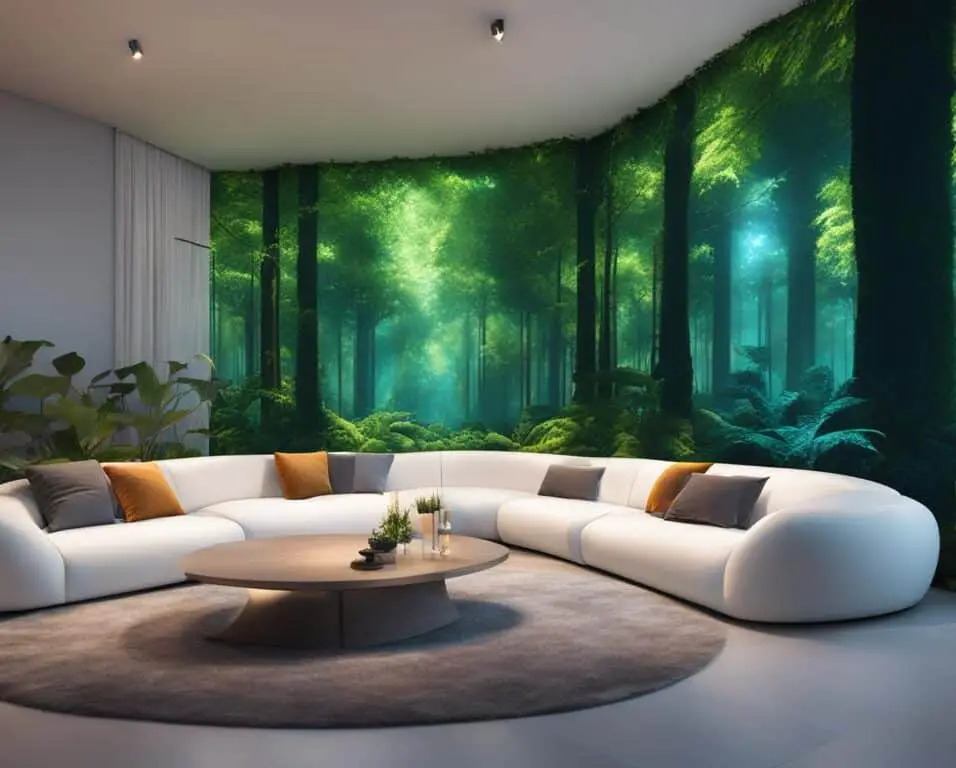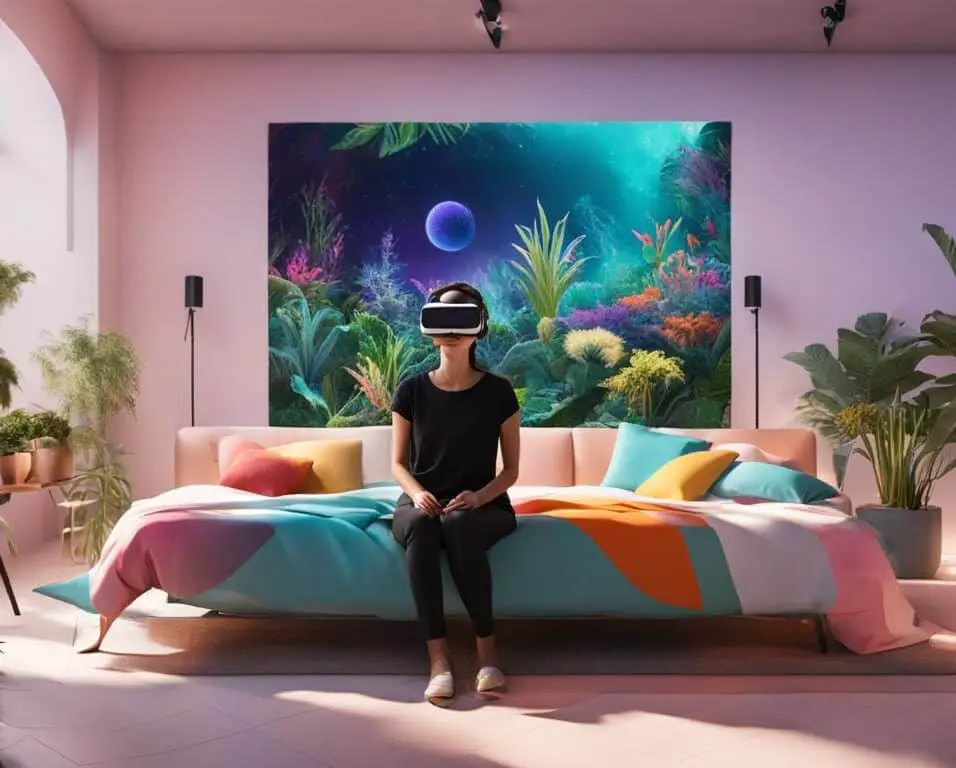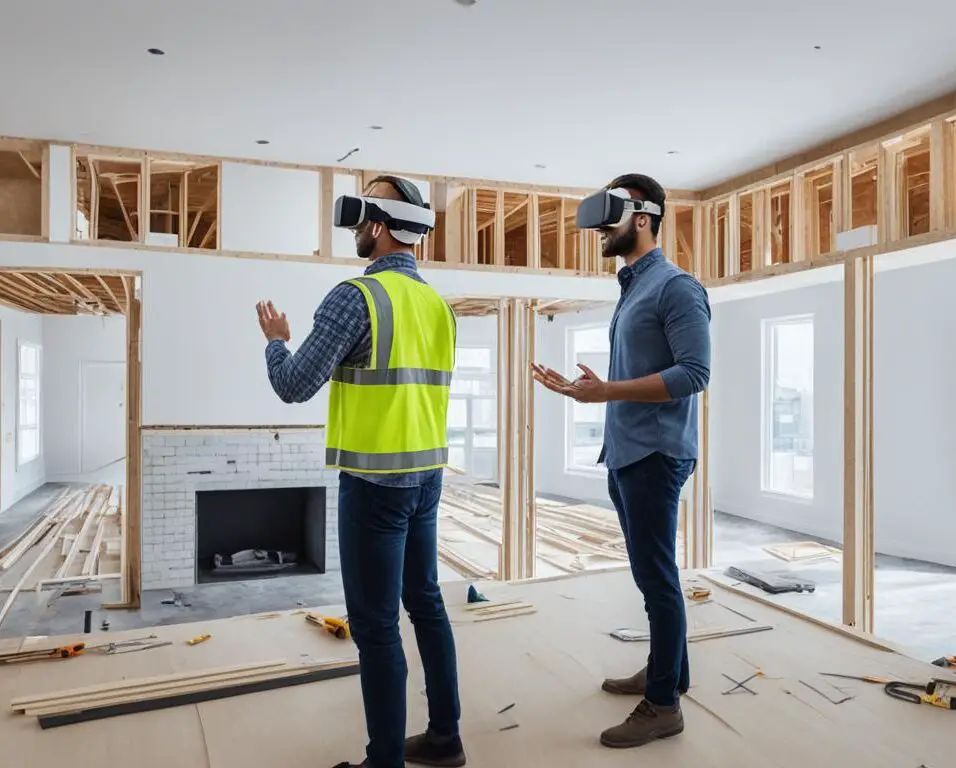Material World: VR in Building Material Selection
VR technology is revolutionizing the way architects and clients visualize materials during the building material selection process. This innovative technology allows users to immerse themselves in virtual environments and explore various materials, textures, and colors in a realistic and interactive way. By utilizing VR, architects and clients can make more informed decisions about the materials they choose, saving time and ensuring greater satisfaction with the final result.
Key Takeaways:
- VR technology is transforming the building material selection process
- Architects and clients can visualize materials in a realistic and interactive way through VR
- VR enables better decision-making, saving time and ensuring satisfaction
- Immersive experience and enhanced collaboration are key advantages of VR in building material selection
- VR expands design possibilities, encouraging creative exploration and customization options
The Benefits of VR in Building Material Selection
VR technology has revolutionized the building material selection process, offering a wide range of benefits for architects and clients. The immersive experience provided by VR allows users to virtually walk through spaces and visualize materials in a realistic environment. This enables stakeholders to gain a better understanding of how different materials will look and feel in the final construction.
One of the key advantages of using VR is the time-saving aspect it offers. With VR, there is no longer a need for physical samples and mock-ups, as everything can be virtually presented and assessed. This eliminates the hassle of physical material sourcing and speeds up the decision-making process.
Furthermore, VR enables greater accuracy in material selection. It provides a clear and detailed representation of how materials will look under different lighting conditions and from various perspectives. Architects and clients can make more informed decisions based on the realistic visualizations provided by VR technology.
The benefits of VR in building material selection can be summarized as follows:
- Immersive experience: Architects and clients can virtually explore spaces and visualize materials.
- Time-saving: Physical samples and mock-ups are no longer necessary.
- Greater accuracy: VR provides realistic visualizations of materials under different conditions.
VR technology revolutionizes the building material selection process by offering an immersive experience, saving time, and providing greater accuracy in material selection.
In conclusion, VR technology enhances the building material selection process by providing an immersive experience, saving time, and increasing accuracy. Architects and clients can benefit from realistic visualizations that help them make informed decisions about materials. The utilization of VR in building material selection is a game-changer in the architectural industry, allowing for a more efficient and effective design process.
Enhanced Collaboration and Communication
VR technology has revolutionized the way architects, clients, and other stakeholders collaborate and communicate during the design process. By utilizing VR, architects can present their design concepts and material choices to clients in a more engaging and interactive manner, enhancing the overall communication experience.
One of the key advantages of VR in collaboration is the ability to provide clients with a realistic visualization of designs. Through virtual reality, architects can showcase their ideas in an immersive and interactive environment, allowing clients to truly understand and experience the proposed space. This leads to more effective communication and a clearer alignment of expectations between architects and clients.
Furthermore, VR enables real-time feedback and adjustments. Clients can instantly provide feedback on the design, making it easier for architects to incorporate changes and iterate on the concepts. This immediate feedback loop not only saves time but also ensures that the final design meets the client’s vision and requirements.
Remote collaboration is another significant benefit of VR technology. Architects can easily work with clients from different locations, breaking down geographical barriers and enabling seamless collaboration. Through VR, architects and clients can review design options together, regardless of their physical proximity, fostering a more inclusive and efficient design process.
VR technology has transformed the way architects and clients collaborate and communicate during the design process, allowing for immersive experiences, real-time feedback, and remote collaboration. This enhanced collaboration leads to better decision-making and ultimately results in more successful and satisfying design projects.
Furthermore, VR technology facilitates effective communication with other stakeholders involved in the design process. Contractors, engineers, and other professionals can also immerse themselves in the virtual environment, gaining a better understanding of the design intent and contributing their expertise early in the process.
Example of VR Collaboration in Action:
Imagine a project where an architectural firm is working on designing a new office space for a global company. Through VR technology, architects can create a virtual representation of the proposed design and collaborate with clients in an engaging and interactive manner.
The clients, located in different parts of the world, can put on VR headsets and virtually walk through the space, experiencing the design as if they were physically present. They can provide instant feedback, pointing out areas they would like to modify or features they want to emphasize.
Architects, on the other hand, can make adjustments to the materials, lighting, or layout in real-time, giving clients a clear understanding of the potential changes. This iterative design process not only saves time but also ensures that the final design meets the client’s expectations.
Through the power of VR, collaboration becomes seamless, regardless of distance or time zone. The technology allows for efficient communication, enables real-time feedback and adjustments, and fosters a more inclusive and collaborative design process.
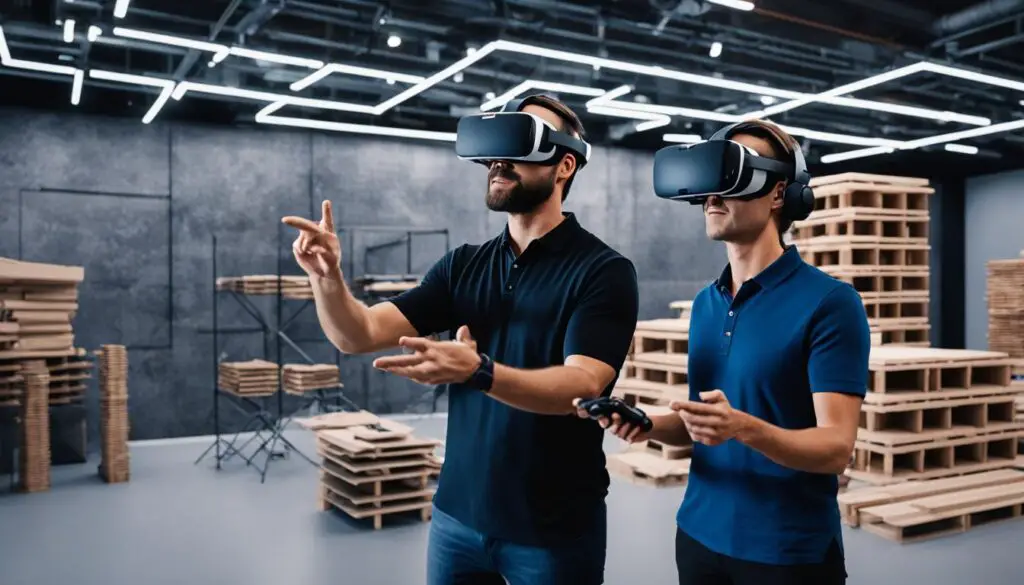
| Benefits of VR Collaboration and Communication | Examples |
|---|---|
| Enhanced communication between architects and clients | Real-time feedback and adjustments during virtual walkthroughs |
| Efficient collaboration with remote clients and stakeholders | Virtual meetings and design reviews across different locations |
| Improved understanding of design intent for all stakeholders | Virtual representations of designs for contractors, engineers, etc. |
Expanding Design Possibilities
VR in building material selection opens up a world of design possibilities and encourages creative exploration. With this innovative technology, architects can push the boundaries of traditional design and experiment with different material combinations to create unique and personalized spaces. By visualizing how different materials will work together in the final space, architects can make informed decisions and achieve their vision with precision.
One of the key advantages of VR is the ability to explore innovative solutions and customization options. Architects can easily test and visualize unique design elements, allowing for greater creativity and customization in the design process. Whether it’s incorporating unconventional materials or introducing innovative architectural features, VR empowers architects to bring their imaginative design concepts to life.
“VR technology has transformed the way we approach design. It has given us the freedom to think outside the box, explore new ideas, and create spaces that are truly one-of-a-kind.”
Furthermore, VR offers a seamless workflow for architects to visualize the design possibilities. It enables them to easily iterate and refine their ideas, making it a valuable tool for the creative process. Architects can make real-time adjustments to the design, assess the impact of different design decisions, and fine-tune the details to perfection.
Material Combinations
VR allows architects to experiment with diverse material combinations and visualize how they will interact with each other in the final space. This enables them to explore the aesthetic and functional aspects of different materials, ensuring that the chosen combination aligns with the overall design intent.
Innovative Solutions
With VR, architects can explore innovative design solutions that may not be feasible or easy to envision in traditional methods. The immersive and interactive nature of VR technology allows architects to test out unconventional ideas and assess their viability before committing to them.
Customization
VR technology enables architects to create highly customized spaces that meet the specific needs and preferences of their clients. By visualizing and fine-tuning every detail with precision, architects can ensure that the final design reflects the client’s vision and objectives.
| Advantages of VR in Expanding Design Possibilities |
|---|
| Enables experimentation with diverse material combinations |
| Fosters exploration of innovative design solutions |
| Empowers customization to meet clients’ specific needs |
| Facilitates real-time adjustments and fine-tuning of design details |
Overcoming Limitations and Challenges
While the benefits of VR in building material selection are significant, there are also limitations and challenges to consider. Firstly, the accessibility of VR technology may be a limitation for some architects and clients, as not all have access to the necessary equipment and software. Additionally, the cost of implementing VR can be a barrier, especially for smaller firms or projects with limited budgets. Furthermore, there may be a learning curve associated with using VR technology effectively. However, it is important to note that as technology advances, these limitations and challenges are gradually being overcome, making VR more accessible and affordable for a wider range of users.
Conclusion
In conclusion, VR technology is revolutionizing the building material selection process for architects and clients. This innovative technology provides an immersive experience that allows stakeholders to visualize materials in a realistic and interactive way, leading to more informed decisions. With VR, architects and clients can explore various materials, textures, and colors in virtual environments, gaining a better understanding of how they will look and feel in the final construction.
Furthermore, VR enhances collaboration and communication between architects and clients, improving the overall design process. Architects can present their design concepts and material choices in a more engaging and interactive manner, facilitating instant feedback and real-time adjustments. This streamlined collaboration leads to better decision-making and a more efficient design workflow.
Moreover, VR expands the design possibilities for architects, enabling creative exploration and the visualization of unique and customized spaces. Architects can experiment with different material combinations, pushing the boundaries of traditional design and offering innovative solutions to clients. Through VR, architects can create tailored and personalized spaces that meet the specific needs and preferences of their clients.
Although there are limitations and challenges associated with VR technology, such as accessibility and costs, the continuous advancements in VR are making it more accessible and affordable for architects and clients. As VR technology continues to evolve, it will undoubtedly revolutionize the way architects and clients select building materials, providing an enhanced immersive experience, improved collaboration, and limitless design possibilities.
FAQ
How does VR technology revolutionize the building material selection process?
VR technology revolutionizes the building material selection process by allowing architects and clients to immerse themselves in virtual environments and explore various materials, textures, and colors in a realistic and interactive way.
What are the benefits of using VR in building material selection?
The benefits of using VR in building material selection include providing an immersive experience, saving time by eliminating the need for physical samples, and allowing for greater accuracy in material selection, as it provides a clear and detailed representation of how materials will look in different lighting conditions and from different perspectives.
How does VR technology enhance collaboration and communication in the design process?
VR technology enhances collaboration and communication in the design process by allowing architects to present design concepts and material choices to clients in an engaging and interactive manner. Clients can provide instant feedback and make real-time adjustments, leading to better decision-making and a more efficient design process. VR also enables remote collaboration, making it easy to work with clients from different locations and share and review design options.
How does VR technology expand design possibilities?
VR technology expands design possibilities by allowing architects to experiment with different material combinations and visualize how they will work together in the final space. It also encourages the exploration of innovative solutions and customization options, as architects can easily test and visualize unique design elements.
What are the limitations and challenges associated with VR in building material selection?
The accessibility of VR technology may be a limitation for some architects and clients, as not all have access to the necessary equipment and software. The cost of implementing VR can also be a barrier, especially for smaller firms or projects with limited budgets. Additionally, there may be a learning curve associated with using VR technology effectively. However, as technology advances, these limitations and challenges are gradually being overcome, making VR more accessible and affordable.



